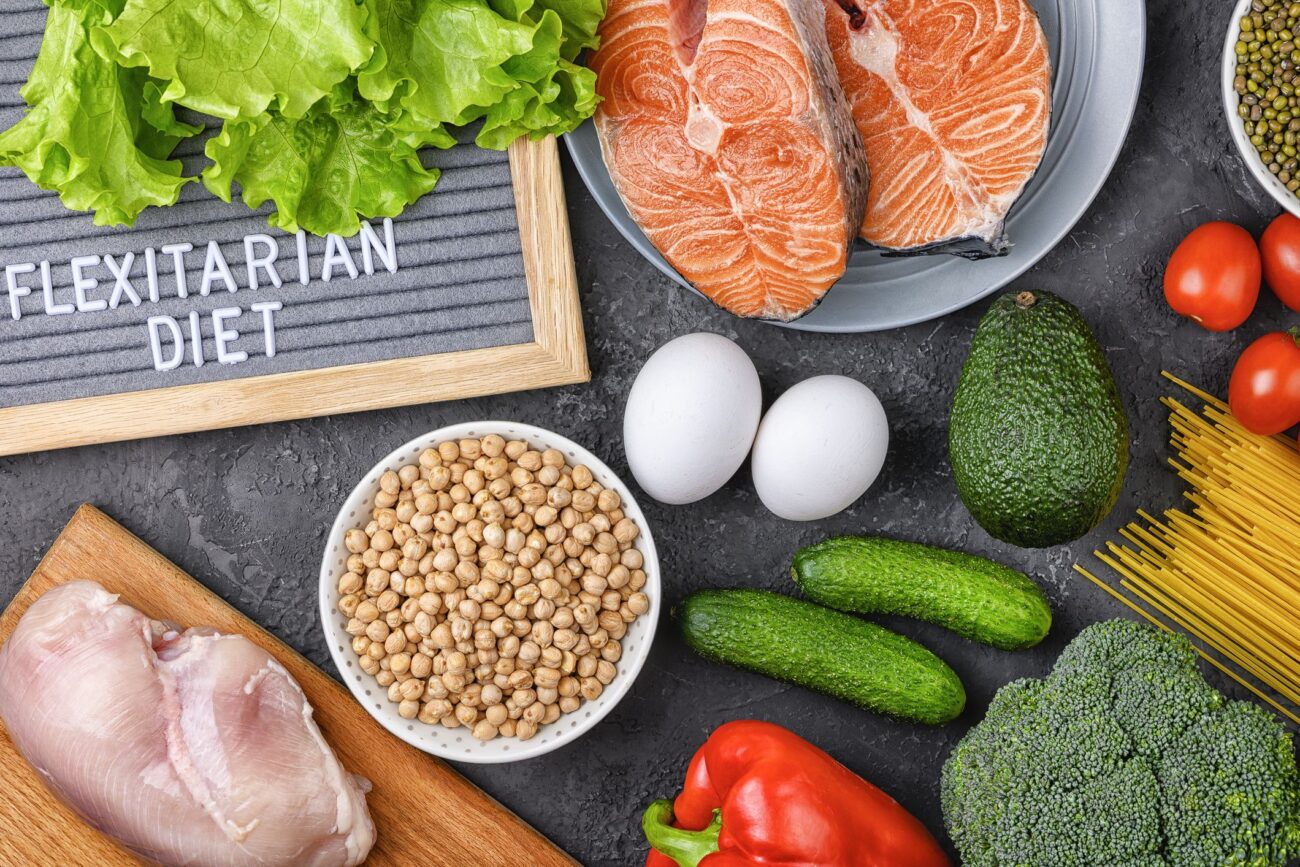In a world where dietary trends come and go, the flexitarian diet has emerged as a sustainable and balanced approach to eating. Combining the best of both vegetarian and omnivorous diets, the flexitarian lifestyle emphasizes plant-based foods while allowing for occasional meat and animal products. It’s a flexible, inclusive way to improve your health and reduce your environmental footprint.
In this blog post, we’ll explore the rules, benefits, and potential contraindications of the flexitarian diet.
What is the Flexitarian Diet?
The term “flexitarian” is a blend of “flexible” and “vegetarian.” Created by dietitian Dawn Jackson Blatner, the flexitarian diet encourages primarily plant-based eating but doesn’t eliminate meat entirely. Instead, it focuses on reducing meat consumption and incorporating more fruits, vegetables, whole grains, legumes, nuts, and seeds. It’s a practical and realistic approach for those who want to enjoy the health benefits of a vegetarian diet without giving up meat completely.
Rules of the Flexitarian Diet
The flexitarian diet doesn’t have strict rules, but it provides general guidelines to help you transition to a more plant-based lifestyle:
- Prioritize Plant-Based Foods
Make fruits, vegetables, whole grains, legumes, nuts, and seeds the foundation of your meals. - Limit Meat and Animal Products
Reduce your intake of meat, poultry, and fish, but don’t eliminate them entirely. Think of meat as a side dish or occasional treat rather than the main focus of your meals. - Choose Whole, Unprocessed Foods
Focus on whole, minimally processed foods and avoid highly processed snacks and meals. - Be Mindful of Portions
Practice portion control, especially with calorie-dense foods like nuts, seeds, and oils. - Experiment with Meat Alternatives
Try plant-based proteins like tofu, tempeh, lentils, and chickpeas to replace meat in your meals. - Stay Flexible
The flexitarian diet is all about balance. There’s no need to feel guilty if you occasionally eat meat or animal products.
Benefits of the Flexitarian Diet
- Improved Heart Health
A diet rich in fruits, vegetables, and whole grains can lower cholesterol, reduce blood pressure, and decrease the risk of heart disease. - Weight Management
Plant-based diets are typically lower in calories and higher in fiber, which can help with weight loss or maintenance. - Reduced Risk of Chronic Diseases
Studies show that plant-based diets are associated with a lower risk of type 2 diabetes, certain cancers, and other chronic conditions. - Better Digestion
The high fiber content in plant-based foods promotes healthy digestion and prevents constipation. - Environmental Sustainability
Reducing meat consumption can lower your carbon footprint, conserve water, and reduce greenhouse gas emissions. - Cost-Effective
Plant-based proteins like beans and lentils are often more affordable than meat, making the flexitarian diet budget-friendly. - Flexibility and Ease
Unlike strict diets, the flexitarian approach is easy to follow and adapt to your lifestyle.
Potential Contraindications and Considerations
While the flexitarian diet is generally safe and beneficial for most people, there are a few considerations to keep in mind:
- Nutrient Deficiencies
Reducing meat intake can lead to deficiencies in nutrients like vitamin B12, iron, and omega-3 fatty acids. To avoid this, include fortified foods or supplements if needed. - Protein Intake
Ensure you’re getting enough protein by incorporating plant-based sources like beans, lentils, tofu, and quinoa. - Digestive Issues
A sudden increase in fiber can cause bloating or gas. Gradually increase your intake of fiber-rich foods and drink plenty of water. - Social and Cultural Challenges
Dining out or attending social events may require extra planning to stick to your flexitarian goals. - Not Suitable for Everyone
Individuals with specific dietary needs or medical conditions should consult a healthcare professional before making significant changes to their diet.
How to Get Started with the Flexitarian Diet
- Start Small
Begin by designating one or two days a week as meatless days. Gradually increase the number of plant-based meals over time. - Experiment with Recipes
Try new plant-based recipes to keep your meals exciting and flavorful. - Plan Ahead
Stock your kitchen with staples like beans, lentils, whole grains, and fresh produce. - Listen to Your Body
Pay attention to how your body responds to the diet and adjust as needed.

The flexitarian diet offers a balanced, flexible approach to healthy eating that benefits both your body and the planet. By prioritizing plant-based foods while still allowing for occasional meat, you can enjoy the best of both worlds. Whether you’re looking to improve your health, lose weight, or reduce your environmental impact, the flexitarian diet is a sustainable and realistic choice.
So, why not give it a try? Start small, experiment with new foods, and discover how easy and rewarding it can be to eat more plants.
Your body—and the planet—will thank you!
Have you tried the flexitarian diet? Share your experiences and tips in the comments below!

